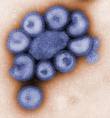Despite promises that the Swine Flu vaccine is safe, it has not been tested on the target demographic that is now receiving the shots in Europe. The testing phase began the moment the drug became available and was administered to the public. It actually has been tested, but only on a small group of healthy people. This was done in a very short period of time. The long-term effects to all parties involved are unknown.
By Daan de Wit
Translated by Ben Kearney
[Dutch] Minister Klink is saying that the H1N1 vaccine is safe. De Telegraaf writes: 'He bases this on the opinion of all the agencies that look at the composition of the vaccine and oversee its approval. 'A drug that is not approved, and is thus not safe, is not going to be released to the general public', said Klink'. But Klink knows that an exception to this rule has been made for the Swine Flu vaccine.
H1N1 vaccine hardly tested in advance
The European Medicines Agency (EMEA) is the agency that looks after the safety of vaccines in Europe. Anyone placing a vaccine on the market has to put it through an 18 to 24 month test period and can only put it on the market after it's approved by the EMEA.  But in the event of a pandemic, other rules apply. Because a new vaccine must be developed quickly to fight a pandemic virus, a solution in the form of an emergency procedure has been devised. In the course of preparing a vaccine against a pandemic virus, the manufacturer presents a mock-up vaccine to the EMEA for approval. Once approved, this vaccine can then be adjusted at the last minute by the manufacturer to include the new virus strain. In the case of the Swine Flu, this means that the H5N1 virus is replaced by an inactivated H1N1 virus in the formula for the Avian Flu vaccine. After this is done, the new product can be put into production - the Swine Flu vaccine. Prior to wide-scale distribution, it is tested for a short time on small groups of people and on animals. For this reason the EMEA also writes: 'There is currently no clinical experience with Focetria (H1N1) in adults, including the elderly, children or adolescents. [...] There are currently no data available on the use of Focetria in pregnancy'. The EMEA writes exactly the same thing about the other brand of vaccine that's being used in The Netherlands, Pandemrix. H1N1 vaccine being tested after the fact
But in the event of a pandemic, other rules apply. Because a new vaccine must be developed quickly to fight a pandemic virus, a solution in the form of an emergency procedure has been devised. In the course of preparing a vaccine against a pandemic virus, the manufacturer presents a mock-up vaccine to the EMEA for approval. Once approved, this vaccine can then be adjusted at the last minute by the manufacturer to include the new virus strain. In the case of the Swine Flu, this means that the H5N1 virus is replaced by an inactivated H1N1 virus in the formula for the Avian Flu vaccine. After this is done, the new product can be put into production - the Swine Flu vaccine. Prior to wide-scale distribution, it is tested for a short time on small groups of people and on animals. For this reason the EMEA also writes: 'There is currently no clinical experience with Focetria (H1N1) in adults, including the elderly, children or adolescents. [...] There are currently no data available on the use of Focetria in pregnancy'. The EMEA writes exactly the same thing about the other brand of vaccine that's being used in The Netherlands, Pandemrix. H1N1 vaccine being tested after the fact
H1N1 vaccine being tested after the fact
Author Willem Middelkoop points out [10:15] on the Dutch TV program Pauw and Witteman that the Swine Flu vaccine is only being tested after the fact. He is contradicted by Arno Timmermans, director of the Dutch Society of Family Doctors. Timmermans says that he has looked at comparable vaccines that have in fact been tested. His statement leaves one with the impression that the Swine Flu is safe because a comparable drug is also safe. In referring to vaccines that have actually been tested, perhaps Timmermans is talking about tests that have been performed on the Avian Flu virus, H5N1. The production of the new vaccine for the Swine Flu is based on that of H5N1 vaccine. For this reason the Focetria insert also states: 'In deciding to use Focetria (H1N1) [...] the amount of available clinical data on a version of the vaccine containing the H5N1 antigen should be taken into consideration along with the disease characteristics of the current influenza pandemic'. But according to experts one can't compare the one vaccine to the other just like that, because it's a new vaccine with a new composition. Nobody knows what the vaccine's long-term effect on the human body is. The EMEA doesn't know it, the manufacturer doesn't know it, and the [Dutch] National Health Council doesn't know it either. Only now that the vaccines are being distributed has the actual testing phase begun: 'Clinical safety and efficacy should be studied [...] after approval of the pandemic vaccine. [...] Safety data on the final pandemic vaccine will arise from real life use and from post marketing studies [...]', writes the EMEA.
H1N1 should not be compared to other tested vaccinations
Arno Timmermans may well have meant something else with his remark that comparable vaccines have actually been tested. Timmermans might have been talking about Fluad. It's a flu vaccine that has indeed been tested and placed on the market. In the Focetria insert it states that the vaccine is based on Fluad. But the comparison between Pandemrix and Focetria doesn't hold up because Fluad is a vaccine for people 65 years and older. Potential adverse effects of this vaccine - and even death -  can be seen during the testing period as the consequence of old age instead of being seen as effects of the vaccine. For this reason you can't compare the one vaccine for seniors (Fluad) with the other vaccine for younger people (Pandemrix or Focetria).
can be seen during the testing period as the consequence of old age instead of being seen as effects of the vaccine. For this reason you can't compare the one vaccine for seniors (Fluad) with the other vaccine for younger people (Pandemrix or Focetria).
Another reason that demonstrates that it is unwise to compare 'comparable vaccines' with the Swine Flu vaccine is provided by the U.S. Food and Drug Administration. The FDA states that: 'immune responses obtained with one antigen/adjuvant cannot be extrapolated to another antigen or even to the same combination given by different routes'. Further down in the document, a sole concern resounds when the agency poses the question: 'Should additional animal studies be required to evaluate long term effects of adjuvants?' On her website, the now-retired primary care physician Susan Chu points out that's it's not a good idea to compare data on the H5N1 vaccine with those on the H1N1 vaccine. One of the reasons is the use of adjuvants. Chu says that 'how an adjuvant behaves with one antigen may be drastically different when the antigen is substituted. If H1N1 is a more immunogenic strain than H5, and we use the same dose of antigen and adjuvant, what is the risk of excessive immune response causing adverse reactions? I don't think anyone has any idea'.




 But in the event of a pandemic,
But in the event of a pandemic,  can be seen during the testing period as the consequence of old age instead of being seen as effects of the vaccine. For this reason you can't compare the one vaccine for seniors (Fluad) with the other vaccine for younger people (Pandemrix or Focetria).
can be seen during the testing period as the consequence of old age instead of being seen as effects of the vaccine. For this reason you can't compare the one vaccine for seniors (Fluad) with the other vaccine for younger people (Pandemrix or Focetria).